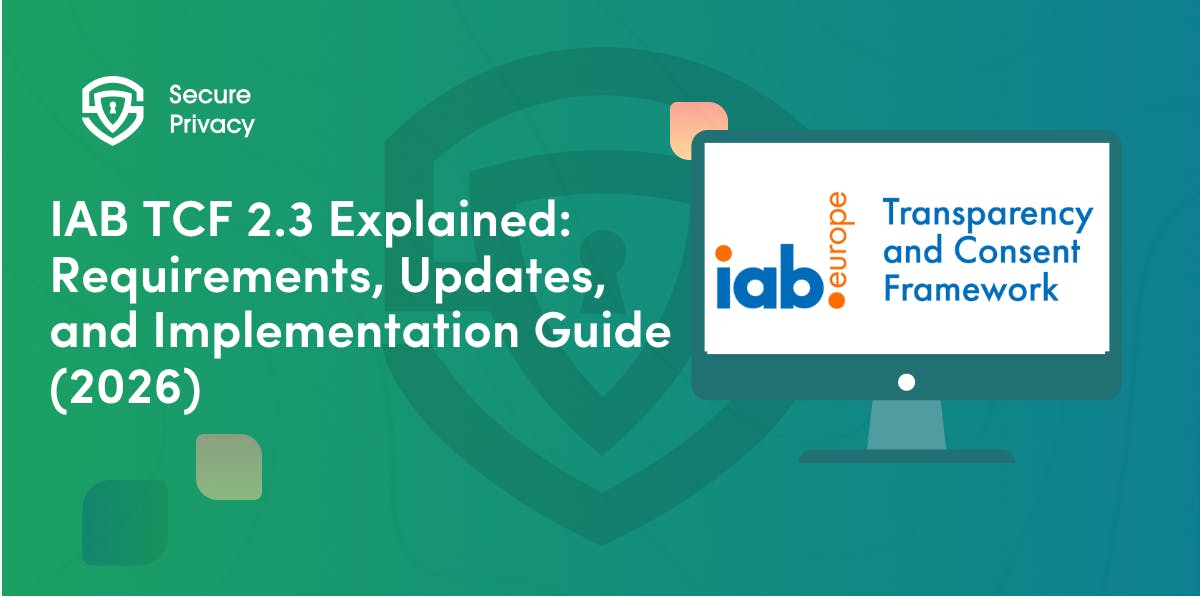Compliance Challenges at the Intersection between AI & GDPR in 2025
Are your AI systems putting your organization at risk of GDPR violations? As artificial intelligence becomes more deeply embedded in business operations, the compliance landscape has grown increasingly complex. Organizations now walk a tightrope between innovation and regulatory adherence, facing unique challenges where AI capabilities and data protection requirements meet head-on.
Key Compliance Challenges
The integration of AI systems with personal data processing creates several critical compliance pressure points that your organization must address. These challenges span multiple dimensions, from fundamental data protection principles to emerging AI-specific regulations.
Data Protection and Privacy
The core principles of GDPR remain central to compliant AI implementation. Your AI systems must collect only essential personal data needed for specific purposes, strictly adhering to the principle of data minimization. This targeted approach to data collection helps protect individual privacy while reducing your organization's compliance burden.
Beyond collection practices, purpose limitation represents another significant hurdle. You need to ensure your AI systems process data only for specified, legitimate purposes as mandated by GDPR. This means implementing technical and organizational measures that prevent function creep—where data collected for one purpose gradually gets used for others without proper authorization.
Transparency requirements have also intensified, with organizations now expected to provide clear explanations of how their AI systems collect, store, and use personal data. This includes detailing both data volume and sensitivity, often requiring new approaches to privacy notices and user communications that balance comprehensiveness with clarity.
AI-Specific Regulations
The regulatory environment has evolved significantly with the introduction of the EU AI Act, which brings additional compliance requirements specifically for AI systems. This landmark legislation creates a tiered approach to regulation, with particularly stringent rules for systems deemed high-risk—those used in critical infrastructure, employment, essential services, and law enforcement contexts.
Risk assessments have become mandatory for many AI implementations, with organizations required to conduct Data Protection Impact Assessments (DPIAs) for AI systems that could create significant risks to individuals. These assessments must evaluate not just data protection concerns but also broader societal and ethical implications of AI deployment.
Documentation requirements have expanded dramatically, with detailed records of AI data processing now essential for demonstrating compliance. Your organization must maintain comprehensive audit trails and technical documentation of AI models, including training methodologies, data sources, and validation procedures—creating significant administrative overhead.
Cross-Border Data Transfers
International data flows present particular challenges for AI systems, which often leverage global computing resources and data sources. The invalidation of Privacy Shield and subsequent introduction of the EU-U.S. Data Privacy Framework have complicated cross-border data transfers, requiring organizations to implement additional safeguards when transferring personal data to third countries.
The global patchwork of data protection laws further complicates matters for organizations operating across multiple jurisdictions. Different countries and regions have established their own regulatory approaches to AI and data protection, creating compliance complexities for global AI operations that require careful navigation and jurisdiction-specific adaptations.
AI-Specific Challenges
The technical nature of AI systems creates unique compliance obstacles. The notorious "black box" problem—where AI systems make decisions through processes that are difficult to interpret or explain—directly conflicts with GDPR's requirements for transparency and explainability in automated decision-making. Your organization must implement measures to increase algorithmic transparency without compromising system performance.
AI's data hunger presents another fundamental tension with GDPR principles. While sophisticated AI systems typically require large volumes of training data to function effectively, this requirement stands in direct opposition to GDPR's data minimization principle. Finding the balance between sufficient training data and minimal data collection represents a continuous challenge.
Bias and fairness concerns have moved to the forefront of AI compliance considerations. Ensuring AI systems maintain accurate data while preventing discriminatory outcomes requires ongoing monitoring and mitigation efforts. Your organization must implement robust testing protocols to identify and address potential biases in AI outputs before they impact individuals.
Human oversight requirements have forced many organizations to reconsider their AI governance structures. The GDPR establishes the right to human intervention in certain automated decision-making contexts, requiring organizations to maintain appropriate human review capabilities alongside their AI systems—sometimes limiting potential efficiency gains.
Compliance Strategies and Future Trends
To navigate these challenges successfully, forward-thinking organizations are implementing multi-faceted compliance strategies. Privacy-by-design approaches integrate data protection considerations from the earliest stages of AI development, while data governance frameworks establish clear accountability for AI operations.
Looking ahead, we can expect regulatory convergence as jurisdictions worldwide refine their approaches to AI governance. Technical solutions for privacy-preserving AI, such as federated learning and differential privacy, are likely to become standard practices as organizations seek to balance innovation with compliance.
The stakes for getting this right couldn't be higher. With GDPR penalties reaching up to 4% of global annual revenue or €20 million (whichever is greater), and the EU AI Act introducing additional enforcement mechanisms, the financial implications of non-compliance are substantial. Beyond direct penalties, organizations face reputational damage, loss of customer trust, and potential business disruption from regulatory interventions.
By understanding these challenges and implementing comprehensive compliance strategies, your organization can harness AI's transformative potential while respecting individual privacy rights and meeting regulatory requirements.
Get Started For Free with the
#1 Cookie Consent Platform.
No credit card required

What is Cookie Consent? A Quick 2026-Ready Glance
Your website loads. Cookies track users. But without proper cookie consent, you're violating GDPR — risking fines up to €20 million or 4% of global revenue. Cookie consent is the legally required mechanism by which websites obtain explicit user approval before deploying non-essential tracking technologies. This requirement stems from GDPR Article 4(11) and the ePrivacy Directive, mandating that consent must be freely given, specific, informed, and unambiguous.
- Legal & News

DSAR Tools Explained: Best Software for Automating Privacy Requests
You're drowning in data subject access requests. Manual searches through dozens of systems miss regulatory deadlines and expose organizations to fines starting at $2,500 per violation. The solution? DSAR tools — purpose-built software that automates the entire process of responding to data subject access requests, from intake to delivery.
- Legal & News

IAB TCF 2.3 Explained: Requirements, Updates, and Implementation Guide (2026)
Your ad revenue dropped 40% overnight. Google stopped bidding on your inventory. Your DSP partners flagged your traffic as non-compliant. The culprit? An outdated TCF 2.2 consent string after the February 2026 enforcement deadline.
- Legal & News
- Cookie Consent

